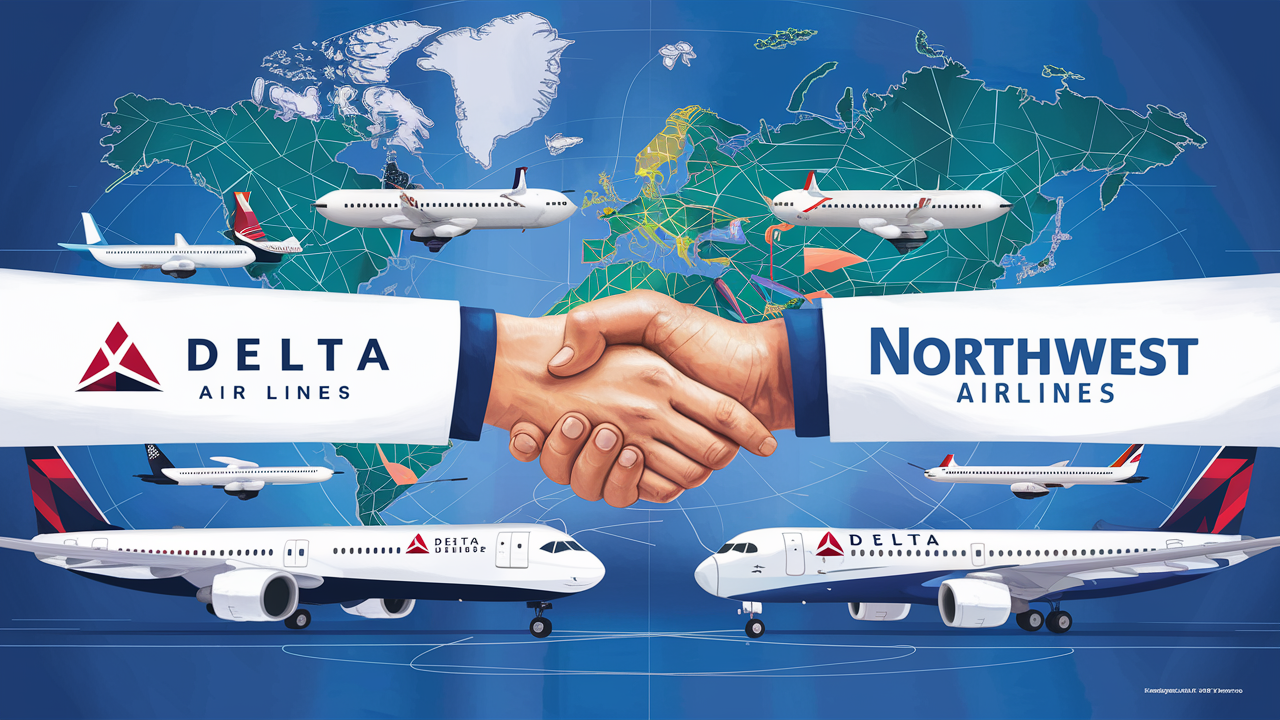Who did Delta merge with?

Now that you have a brief understanding of the above airline, let us now answer our main question, ‘Who did Delta Airlines merge with?’
To give a practical example, Delta Airlines, as one of the key and most significant US airlines, has experienced several mergers and acquisitions throughout its one-century existence. The company started from a small crop dusting business in the 1920s and has transformed into one of the leading airline companies in the country. Well, as Delta was focusing and growing along this path, who did they merge with?
Delta's Early Beginnings
Collett E. Woolman started Delta Air Line, or Delta, in Macon, Georgia, under the moniker Huff Daland Dusters in 1924, mostly with an eye toward the crop dusting industry. Originally titled Delta Air Services with the Mississippi Delta area it operated in, to the headquarters in Monroe, Louisiana, in 1925
Beginning its operations in 1929, Delta Air Lines originally carried passengers from Dallas, Texas, to Jackson, Mississippi, via Shreveport and Monroe, Louisiana. Delta kept expanding passenger services, including Charleston, South Carolina, Fort Worth, Texas, and the Mississippi Delta in 1930.
There was a merger in 1953 where Chicago and Southern Air Lines merged their operations.
As a result of a merger of Delta in 1953 with Chicago and Southern Air Lines, the airline obtained routes across the midwestern and Gulf coastal areas of the United States and the Caribbean. Finally, the merger was effected, and it was made certain that the new combined company retained the Delta name. This helped to strengthen Delta’s status as one of the national carriers.
The merger made by Chicago and Southern provided Delta with quite a diverse route map having coverage of most of the eastern part of the United States. Additionally, during the 1950s, Delta also began offering international service to several cities in Canada and Mexico, as well as chosen locations in the Caribbean.
1972: Northeast Airlines Acquisition
In August 1972, Delta bought Northeast Airlines for $88 million. Northeast had been running between the major northeastern cities, including New York City and Miami, since 1931.
Northeast Airlines provided Delta with a strong corporate business travel clientele base in the Northeastern United States as well as made Boston a key hub for the company. Coming into possession of the profitable northeast routes and hubs of the Northeast, Delta established itself as one of the four major domestic airlines, United, Eastern, TWA, and itself.
1987: Western Airlines Acquisition
In September 1986, Delta began to take over Western Airlines for $860 million following a fierce battle with a developer, Stephen Wynn. The transaction was completed in April 1987. Western was Los Angeles-based, and it served the West Coast states and Mexico.
Participating in the Western merger was beneficial to Delta as it enabled the airline to acquire more West Coast hubs, such as Los Angeles and Salt Lake City, and more flight connectivity to various Western cities, like San Francisco, Las Vegas, and Seattle. This enhanced the capacity of the delta’s route network for trans-continental flights.
2008: Northwest Airlines Merger
Delta had sought to acquire Northwest Airlines through a hostile takeover in late 2006 and the early part of 2007. Neither offer got the nod from the board of Northwest. However, in April 2008, both Delta Airlines and Northwest Airlines agreed on a deal that involved acquiring stocks with a value of $2.7 billion through the integration of the two airlines. Stockholders and government authorities agreed to the transaction, and Delta finalized the purchase of Northwest in October 2008.
The merger involving Northwest Airlines was the largest one that Delta has undertaken so far. It transformed Delta into what was at that time the largest airline in the world by traffic. This merger allowed Delta to create more connecting points and greatly enlarged Delta’s international destinations. Delta got control of many of the Northwest's hub airports, such as the Minneapolis, Detroit, and Tokyo airports. CEO Richard Anderson also expected the merger to save an additional $1 billion annually in costs and revenues for the airline.
2010: Takeover of Southwest Subsidiary
In the August 2010s, Delta merged with Lynx Aviation, which was the subsidiary of the Southwest Airlines Company that used to operate the turboprop flights. While not a very big merger, it did help Southwest provide feeder services between Los Angeles and San Francisco through feeders with Delta. It also allowed Delta to acquire more slot facilities with major airports.
2012: New Merger Discussions with American Airlines and US Airways
After the 2008 and 2009 discussions, Delta began merger consideration with American Airlines again in early 2012, when American was in bankruptcy. Unfortunately, the two competitors could not come to a consensus over the deal. At the same time, it was suggested that Delta also consider a merger with US Airways. But this again did not yield any agreement. American Airlines however merged with US Airways in 2013 to form the current American Airlines Group company.
The Future
During almost three-quarters of a century, Delta was rather tactlessly expanding its routes and through several strategic acquisitions, which transformed a southern crop duster into one of the leading international airlines. As of today, there is no merger in the pipeline, as seen in the figure below, but this does not eliminate the fact that Delta will continue to embrace mergers that enhance its domestic as well as international connection, and at the same time, it will also be a profitable affair. In the same way that Delta turned from a regional airline to an international one, it may experience even more important mergers and acquisitions in the following years.
Book your Delta Airlines ticket now! Call +1 833-902-2090
